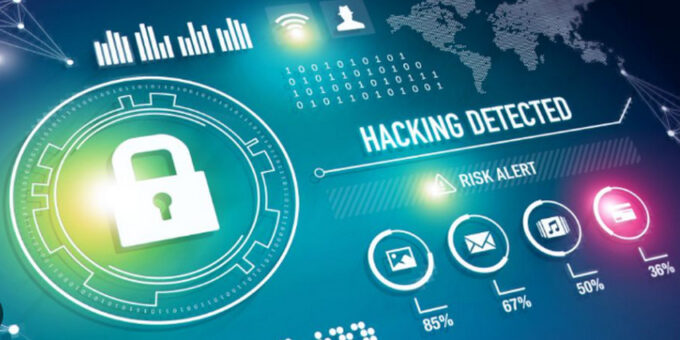
Cybersecurity has become more important than ever in today’s digital age. It safeguards personal data, finances, and business operations. With growing cyber threats, understanding how to stay secure online is essential.
What Is Cybersecurity?
Cybersecurity refers to practices that protect devices, networks, and data from cyberattacks. It prevents unauthorized access and ensures sensitive information remains safe. In an interconnected world, robust cybersecurity measures are non-negotiable.
Why Cybersecurity Matters
Cyberattacks are increasing in frequency and sophistication. From phishing emails to ransomware, these threats cause significant harm. Without cybersecurity, businesses and individuals risk losing valuable data and resources.
Furthermore, weak security can lead to identity theft or financial fraud. Protecting your digital footprint ensures peace of mind and confidence in online interactions. Cybersecurity protects not only you but also those connected to you.
Common Cyber Threats
1. Phishing Attacks
Phishing is one of the most common cyber threats. Attackers use deceptive emails or messages to steal sensitive information. These messages often appear from trusted sources, tricking users into clicking harmful links.
Avoid clicking unknown links or downloading attachments from unfamiliar emails. Verify senders before providing personal or financial details.
2. Malware
Malware includes viruses, worms, and spyware designed to harm systems or steal data. It infiltrates devices through malicious websites, software, or emails. Regularly updating antivirus software helps detect and remove malware.
Using only trusted sources for downloads also reduces the risk of malware infections. Backing up important files ensures data recovery in case of an attack.
3. Ransomware
Ransomware locks users out of their systems until a ransom is paid. It targets businesses and individuals alike. Avoid opening suspicious files or links, as these often deliver ransomware. Keeping software up-to-date reduces vulnerabilities.
4. Social Engineering
Social engineering manipulates people into revealing confidential information. Attackers exploit trust through phone calls, emails, or in-person interactions. Always verify requests for sensitive information, even if they seem legitimate.
5. DDoS Attacks
Distributed Denial of Service (DDoS) attacks overwhelm websites with excessive traffic, causing disruptions. Businesses often suffer downtime and revenue losses. Robust firewalls and traffic monitoring tools help prevent these attacks.
Essential Cybersecurity Practices
1. Use Strong Passwords
Strong passwords are your first line of defense. Combine uppercase, lowercase, numbers, and symbols to create secure passwords. Avoid using easily guessable information like birthdays or names.
Use a password manager to generate and store complex passwords. Change passwords regularly to maintain security.
2. Enable Two-Factor Authentication (2FA)
Two-factor authentication adds an extra layer of security. It requires a second verification step, such as a code sent to your phone. Even if someone obtains your password, 2FA prevents unauthorized access.
Enable 2FA for all critical accounts, including email, banking, and social media. It’s a simple but effective measure.
3. Keep Software Updated
Outdated software is a common entry point for cyberattacks. Developers release updates to fix vulnerabilities and enhance security. Enable automatic updates to ensure you’re always protected.
Regularly update operating systems, applications, and antivirus programs. These updates often include critical patches for known threats.
4. Be Cautious Online
Think twice before clicking on unknown links or downloading files. Cybercriminals often use enticing offers to lure victims. Stick to trusted websites and avoid entering personal information on unverified platforms.
Be especially cautious when using public Wi-Fi. Unsecured networks expose you to potential hackers. Use a VPN for added security.
5. Backup Your Data
Data backups are crucial for recovering from cyberattacks. Regularly save important files to external drives or cloud storage. This practice ensures you don’t lose valuable information in case of ransomware or hardware failure.
Automate backups for convenience and consistency. Test your backups periodically to confirm they’re accessible and complete.
Cybersecurity for Businesses
Businesses face unique cybersecurity challenges. A single breach can lead to financial losses, reputation damage, and legal issues. Implementing comprehensive security measures protects both the company and its customers.
Conduct regular security audits to identify vulnerabilities. Train employees to recognize cyber threats and follow best practices. Additionally, invest in advanced security solutions like intrusion detection systems.
Encrypt sensitive data to prevent unauthorized access. Limit access to critical systems, granting permissions only to trusted individuals. Regularly review and update security policies to address emerging threats.
Emerging Trends in Cybersecurity
1. Artificial Intelligence (AI) in Security
AI helps detect and respond to threats faster. It analyzes patterns and identifies unusual activities, preventing attacks proactively. However, attackers also use AI, creating new challenges for defenders.
2. Cloud Security
As businesses move to the cloud, securing online data becomes crucial. Cloud security solutions protect data stored on remote servers. Regularly monitoring cloud activity ensures compliance and safety.
3. IoT Security
Internet of Things (IoT) devices, like smart home systems, present new vulnerabilities. These devices often lack robust security measures, making them easy targets. Securing IoT devices requires regular updates and strong passwords.
4. Zero-Trust Architecture
Zero-trust models assume that no user or device can be trusted by default. This approach minimizes risks by continuously verifying identities and access. Many organizations adopt zero-trust strategies for enhanced security.
Cybersecurity in Everyday Life
Cybersecurity isn’t just for businesses; it’s essential for individuals too. Simple steps, like updating devices and avoiding suspicious links, make a big difference. Educate family members about online safety, especially children and seniors.
Secure your social media accounts by limiting shared personal information. Avoid posting details like your location or travel plans publicly. Awareness and vigilance are key to staying safe in the digital world.
Conclusion
Cybersecurity is a shared responsibility that requires constant attention and adaptation. By following best practices and staying informed, you can protect your data and maintain digital safety. In a world where cyber threats evolve rapidly, taking proactive steps ensures a secure and stress-free online experience.